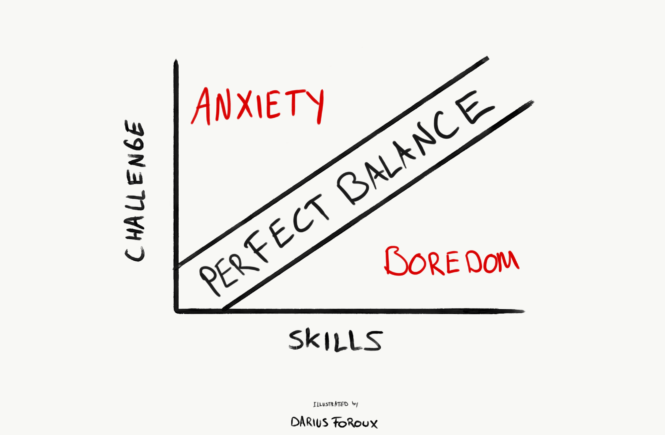Since 2015, I’ve been working on a life plan. I’ve been planning my days, months, and years. In this article, I will share how I do it, and what kind of impact this had on my life and career.
I was inspired to work on long-term planning by Jim Rohn. He talks about this in his classic seminar, How To Take Charge Of Your Life. It’s 30 years old, but his advice is more relevant than ever.
We have so many opportunities and shiny things that grab our attention that we let indecision paralyze us. Too many people wander around without a clear purpose. With planning, you can avoid that type of time-wasting and aimlessness.
To me, there are five main reasons why I plan my days, months, and years.
- More clarity—When I don’t know what to do, I procrastinate, waste my time, and feel bad.
- Saves time—When I think about what I want to do in advance, I’m more effective.
- Boosts creativity—Planning helps me come up with more creative things to do in my life. It also helps me come up with creative solutions to my challenges.
- Momentum—Planning helps me keep moving forward, so I hardly ever get stuck.
- Better thinking—The process of planning forces you to think hard about what you want to do, and how you’re going to do it. That will improve your thinking skills.
There’s one caveat to planning that I want to get out of the way before we get into the process. You can plan life and set goals, but you can’t control outcomes. In fact, planning has nothing to do with control—it has everything to do with getting started.
To plan your life effectively and make sure those plans are executed, I recommend creating a 5-year, 1-year, monthly, and daily plan—in that order.
How to create a 5-year plan
You want to start by looking very far into the future. Where do you want to be roughly? To give you a better idea of the full process, I’ll walk you through the 5-year plan I created in 2015 before I started my blog and online career.
A plan is nothing more than a combination of goals (what you want to achieve) and actions (how you’re going to achieve it). Like most amateur goal-setters, I started with nonsense like, “I want to make a million bucks a year, five years from now!”
I don’t set goals for things I don’t control anymore. But it was a good goal at the time because it helped me think differently. To make large sums of money, you can’t be an employee. You have to be an entrepreneur.
To create your 5-year plan, simply write down a few big goals you want to focus on. If you’re not sure about your 5-year plan yet, or if it feels like your goals are too vague, you might have a general lack of direction in life. And that’s okay. The important thing is that you’re now aware of it and you can make a positive change.
This is why I highly recommend journaling. Writing is a process of self-expression. Writing makes you better at expressing yourself, and your wants. Eventually, you’ll find your true career.
I always encourage my readers, even those who “aren’t writers,” to become better at writing. The better you become at writing, the better you become at thinking.
Other than earning more, I also wanted to live somewhere warm and have a few people working for me. Notice that my 5-year plan was very ambiguous. “Somewhere warm” could be many places. I like to stay flexible because that’s the most realistic approach to life.
I didn’t achieve all my 5-year goals, but that’s fine. Having a plan guided me in the right direction. I’m financially free now and have people working for me as well. I’ve also tried living somewhere warm (in the South of Spain) and realized it’s not for me.
How to create a 1-year plan
You might think, “Why jump from a 5-year plan to a 1-year plan?” Creating a plan for the next 2, 3, or 4 years doesn’t make sense to me. The purpose of the 5-year plan is to help you move in a certain direction. The goal of the 1-year plan is to help you execute.
It’s always important to set realistic goals. And the process of making your 1-year plan forces you to evaluate whether your goals are achievable in that timeframe. For example, let’s say your overall goal is to quit your current job and become a full-time entrepreneur.
When we make plans, we naturally want to achieve many things. You might want to build a business that can sustain you full-time, run a marathon, live abroad, and so forth.
Can you do all of that within a year? Probably not. So you have to decide what you will focus on first. So ask yourself:
“What do I need to achieve this year to move a little bit closer to my 5-year plan?”
The biggest mistake I see with ambitious people is that they overestimate what they can achieve within a year. Remember that the key to continuous progress is making consistent steps forward. You’ll be surprised what you can achieve over five years.
How to create a monthly plan
From this point forward, I start breaking things down into monthly actions. When I started with my major goal of becoming a full-time writer and entrepreneur, back in 2015, the first thing I did was write a book. Then build a website. And so forth.
For your own goals, try to pick something you can focus on doing every month. Something that brings you closer to achieving your 1-year goals. It’s all about executing at this stage. You will thank yourself later for sitting down and thinking about the order of achieving your goals. I like to focus on one thing per area of my life.
Let’s say your goal is to build a website this month. Get clear on every step you need to accomplish before you complete the project.
Until now, I use Evernote to write down my goals and actions as a bulleted list. I don’t like fancy visual apps that make everything look beautiful. A simple bullet list is enough.
But when it comes to my monthly plan, I like to use Trello to manage my projects. I use their boards and lists to get clear on everything I need to do. For a website, you could have a list for technical actions, another for creating content, and another for design.
I don’t get into the details much because everyone thinks differently. It’s up to you to plan all of this. Simply ask yourself: What are ALL the steps I need to take to accomplish my goal? You need to have a good picture of what you need to do.
How to create a daily plan
Once you’re clear on all the steps you need to take that month, simply pick 3-4 actions you will focus on every day. I usually take a few minutes every night to think about what I’m going to do tomorrow. I look at my Trello board and ask myself, “What’s important? And what do I feel like doing tomorrow?”
First, get the important stuff done. Then, do whatever you feel like working on. Stuff that you’re excited about. I have the same approach to writing. I have a huge list of article ideas and before I write, I scroll through it and pick the one I feel like writing. When you’re excited about a task, it’s so much easier to execute.
Most of us have already spent our lives doing things we hated. And let’s be honest, we still have to do things we don’t like all the time. I don’t like doing groceries, paying bills, working out every day, and so forth. But I still do it.
So when it comes to work, take a different approach. Do work you actually enjoy.
But to get there, you need a plan. So give this strategy a try.
Keep reviewing your plans
One final thing. Avoid creating a life plan and going after it with tunnel vision. No one wants to go through life like a dog that’s chasing cars.
That’s why I regularly review my days, weeks, months, and years. I give myself the time and space to re-evaluate them. If your plan isn’t working out, don’t put your head down and keep working without seeing any results.
If your plan doesn’t work, adjust. And keep adjusting until it works. We must look back and be critical of ourselves. Otherwise, we will not grow.
And ultimately, that’s the only real purpose of creating a plan. If you achieve everything you set out, that’s great. But even if you don’t, you will be better off than simply going with the flow.
The secret to lasting career satisfaction and happiness is growth. If you don’t grow, you die. The choice is easy. Now, what’s your plan?




